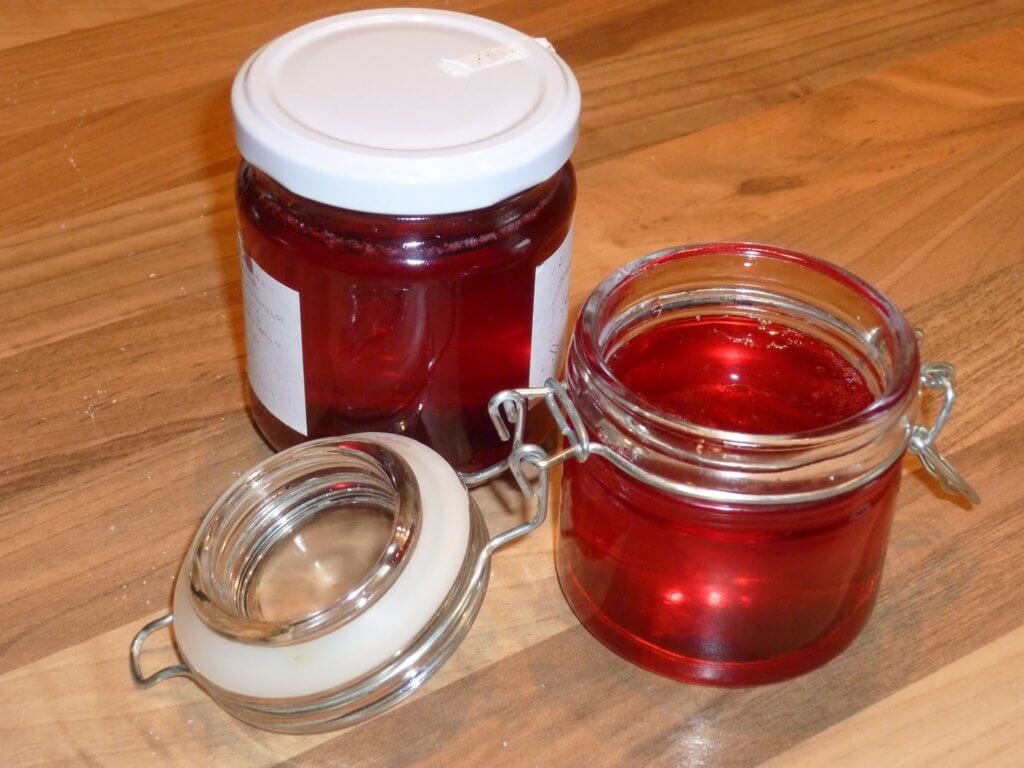How to make jelly – the kind you spread on toast!

Many of us make jam, but how many of us make jelly? I’m not talking wobbly jelly with ice cream, but the kind of jelly that you can spread on toast.
Jelly is a clear fruit spread made from cooked fruit juice and sugar, and possibly pectin, which helps it gel and thicken. After the initial cooking, jelly is strained through a muslin stockinette or “jelly bag” to remove any solids. Traditionally in NZ our grandmothers made guava jelly but you also make grape jelly, apple jelly, berry jelly etc.
Making jelly is a great way to use up any fruit peels. Apple peels contain pectin which acts as a setting agent and acts as a great base for adding other flavours.
To makes 3 jars of jelly (400g size) you need about 3 kilos of apple peels. Unless you are making a big batch of stewed apple, start by collecting apple peels in your freezer (3 kilos takes about the same freezer space, as a loaf of bread as they can be crushed together, so use an old bread bag.)
Wash, remove bruised areas, gently pat dry to remove excess water and freeze. These can be cooking or eating apples. You can also throw in any little pieces left over from a fruit platter or those half eaten apples from children’s lunchboxes.
Flavours
For orange jelly save up the orange peels. Ideally zest the orange peel before freezing both the zest and the peel. You could also use any other citrus fruit. You can also make jelly from the juice strained from cooking berries. Once again pour into a container to freeze it.
When you have about 3 kilos of apple peels take them out and put them in a heavy pan. Add 6 cups of water – 2 cups per kilo – and cook them. Add in the other peels or flavours. Once the peel has cooked to a pulp, add around 2 more cups of water, as it will have evaporated a lot during that cooking time.
Strain the pulp through a jelly bag or, line a large colander with a clean cloth and just leave it to drip into a bowl or pan overnight. When all the juice is through (don’t press it or squeeze it if you want a clear jelly, but if you don’t mind, go ahead and get the last few drops!) measure how many litres of liquid you have.
Making the jelly
Warm 500g sugar per litre of juice – this is half the normal amount used in jam making – then add to the pan with the juice.
Stir gently and continue cooking over a low heat until the setting point is reached.
Make sure you warm your jars to sterilise them. Let the jelly cool for 10 minutes before you pour it in. Seal whilst still hot and store in a dark cupboard. It keeps well – if you can resist it! With less sugar you taste the fruit, not just the sweetness as is common in commercially made (cheaper) jam and jelly.
Try our recipe for apple, orange and ginger jelly here.